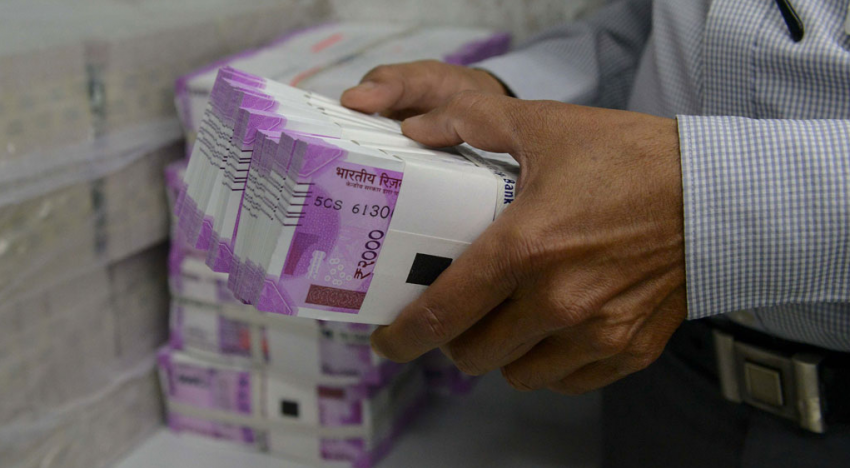The Reserve Bank of India (RBI) had the onerous task of adjusting the “excess reserves” from its balance sheet and then subsequently transferring it to the government just before releasing its annual accounts for the financial year 2018-19 (July-June).
The annual accounts of 2018-19 explains majority of the deviations from the previous year but also brings out some interesting and thought worthy puzzles.
Composition of RBI’s balance sheet and profit and loss
The three charts below provides a snapshot of the composition of RBI’s liabilities, assets and income respectively. Understanding this becomes critical before going ahead.
The total balance sheet of RBI is almost Rs 41 lakh crore, which is almost one-fifth the GDP of India (at current prices) and almost Rs 14 lakh crore higher than the government’s budget size. The total balance sheet size as of June, 2019 is 13.4% higher than a year ago and this perceptible increase can be primarily attributed to the increase in the government securities (owing to open market operations-purchase by RBI) which consequently has led to an increase in notes issued (liquidity infusion).
The liability side of the balance sheet chiefly comprises of notes issued (53%), deposits by commercial banks held by RBI or the cash reserve ratio (19%) and other liabilities and provisions (28%). This last component comprises mainly the currency and gold revaluation reserves (57%) and contingency fund (17%). On the other end, the assets include investment in forex securities (68%) and government instruments (24%).
Rationale for the variations
The RBI’s total income has more than doubled in 2018-19, with interest income growing by 44% while other income growing by 1854%. The total expenses of RBI has contracted by 39%, and thus a growth in revenues and contraction in expenditure has led to a jump in available balance (profits) by 250% in 2018-19.
The more than doubling of total income has been on account of higher interest earnings on rupee securities owing to OMO purchases and more repo transactions, which has led to more government securities held by RBI during the year. In simple words, as the banking system was in liquidity deficit mode during September’18 to May’19, it led to the RBI infusing liquidity via OMO purchase and more repo agreements with banks.
Another aspect which explains the variations is that no funds have been transferred to the contingency reserves as the provisions have declined from Rs 14,190 crore in 2017-18 to merely Rs 64 crore in 2018-19.
The third important reason can be attributed to the increase in other income, part of which is owing to Rs 52,637 crore transferred from the contingent reserves under “provisions no longer required”.
Trick in the forex accounting
The second rationale for the significant jump in other income is on account of an accounting change in recording the exchange gains or losses from foreign transactions. Historically, the RBI has been recording both realised and unrealised gains on account of foreign exchange transactions straight into the ‘gold and currency revaluation account’ which falls under the liability side of the balance sheet.
This simply means that the both realised and unrealised gains from buying or selling dollars were not recorded in the income statement. From this year onwards, a more conventional accounting method has been followed wherein realised gains owing to selling of US dollars has been recorded in the income statement and purely on account of this change the one-time gain realised aggregates Rs 21,464 crore.
The puzzles in the annual accounts
There are two puzzles which the annual accounts have thrown up. First of it pertains to the accounting of Rs 52,637 crore under other income owing to the excess reserves transfer. As per the Bimal Jalan’s report on the economic capital framework, only the contingency reserves was to be used for the transfer.
With there being no additions in the contingent reserves/fund this year, the difference in the contingent fund between the two years has been a decline of Rs 35,764 crore. The difference of Rs 16,873 crore is a puzzling aspect and it would be interesting to know which other provisions have been reversed.
The second is the surplus payable to the central government (as per the balance sheet), which stood at Rs 1.76 lakh crore as of June 30, 2019. Moving on to the income statement, the available balance (difference of income and expenditure) is Rs 1.76 lakh crore. This amount includes the interim dividend amount transferred to the government, aggregating Rs 28,000 crore. If this amount is already paid to the government, it is perplexing why the liability side still accounts for Rs 1.76 lakh crore as of June end.
To sum it up, the release of the annual accounts by the RBI immediately following the Bimal Jalan committee report does explain the significant gain to the government in the form of dividends. Higher OMO purchases, one-time transfer of excess reserves to other income, no provisions to the contingent fund coupled with anomalous forex accounting change aided in boosting the profit numbers.
What would be interesting to see is whether this significant increase in annual dividend to the government would continue going ahead. At present, the accounts are tallied with the ball in the government’s court to observe the efficacy in the usage of this additional income to propel the economy.




